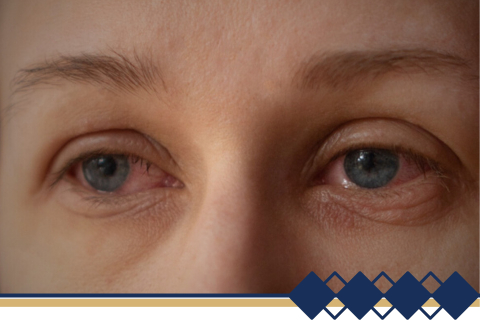Tearing (Watery Eyes)

What is Excessive Tearing?
Excessive tearing happens when your eyes produce too many tears or when the tears can’t drain properly from your eyes. Your tear system is like a sink – you need the right amount of water coming in and a good drain to carry it away. When this balance gets messed up, tears overflow and run down your face. This can happen because your tear ducts are blocked, your eyelids aren’t working right, your eyes are too dry (which sounds backwards but actually makes you tear more), or your tear film has the wrong consistency.
The key is figuring out which part of your tear system isn’t working properly so we can fix the right thing. Learn more about our consultation process to find out what’s causing your tearing problem.
What Can Tearing Treatment Accomplish?
Treating excessive tearing can solve several frustrating problems:
- Stop tears from constantly running down your face
- Eliminate the embarrassment of looking like you’re always crying
- Improve your vision by clearing away excess moisture
- Prevent skin irritation around your eyes from constant wetness
Tearing Treatment Techniques
The treatment depends on what’s causing your tearing problem:
Tear Duct Surgery (DCR)
Punctal Plugs or Surgery
Eyelid Position Repair
Dry Eye Treatment
Procedures Commonly Combined with Tearing Treatment
Tearing problems often require multiple approaches:
Eyelid Repair
Dry Eye Management
Blepharitis Treatment
Allergy Management
How Much Does Tearing Treatment Cost?
Recovery & Results
Candidates for Tearing Treatment
You might benefit from tearing treatment if you have:
- Tears that constantly run down your face without any emotional reason
- Vision problems from excessive moisture in your eyes
- Skin irritation around your eyes from constant wetness
- Difficulty with daily activities because of tearing
LEADERS IN OCULOFACIAL PLASTIC SURGERY IN HOUSTON, THE WOODLANDS, TX AND PENSACOLA, FL

Houston, TX Location
At our Houston office, we deliver advanced cosmetic and reconstructive eyelid surgery techniques in a welcoming environment. Our experienced team focuses on achieving natural-looking results tailored to each person’s unique anatomy and goals.

The Woodlands, TX Location
In The Woodlands, we offer consultations and clinic services, providing our expertise, artistry, and exceptional care to points north of Houston.

Pensacola, FL Location
At our Pensacola office, we deliver advanced eyelid surgery techniques in a serene coastal environment. Our experienced team focuses on achieving natural-looking results tailored to each patient’s unique anatomy and aesthetic goals.
Frequently Asked Questions About Tearing Treatment
Why do my eyes tear more when it's windy or cold outside?
Can dry eyes really cause excessive tearing?
How do you test to see if my tear ducts are blocked?
Is tear duct surgery painful?
Will my tearing problem come back after treatment?
Contact Us for a Consultation
Ready to stop the constant tearing and finally get relief from watery eyes? Contact our offices in Houston, The Woodlands, or Pensacola, FL, today to schedule a personalized consultation with our expert surgeons. Let us help you figure out what’s causing your tearing problem and fix it so you can see clearly without embarrassing overflow with the specialized tear duct expertise you need.
